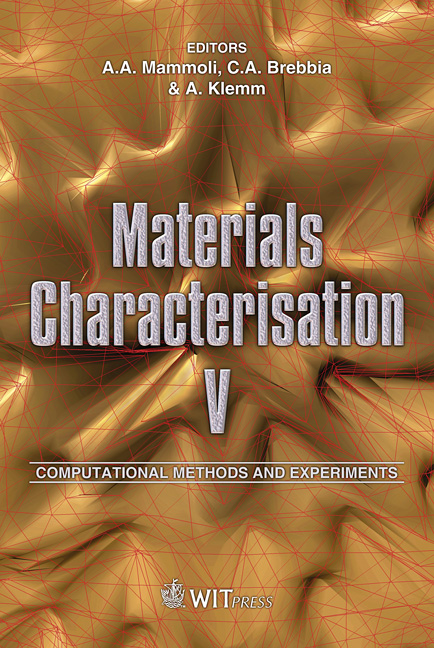Improving Corrosion Performance By Surface Patterning
Price
Free (open access)
Transaction
Volume
72
Pages
9
Page Range
85 - 93
Published
2011
Size
3,213 kb
Paper DOI
10.2495/MC110081
Copyright
WIT Press
Author(s)
M. Bigdeli Karimi, V. Stoilov & D. O. Northwood
Abstract
Based on the idea that hydrophobic (low or non-wettable) surfaces can decrease the contact area between a corrosive solution and a surface, thereby potentially rendering the material more corrosion resistant, the effect of surface patterning on the corrosion behaviour of nickel was investigated. The surface patterning consisted of an array of holes of various diameters (D) and inter-hole spacings (L) that were produced by a laser ablation process. The corrosion behaviour of the patterned surfaces was studied using a potentiodynamic polarization method in a 0.5M H2SO4 electrolyte and compared with that of a polished reference sample. Following the potentiodynamic polarization corrosion test cycle, the corroded surfaces were examined using scanning electron microscopy (SEM) for morphological features and white light interferometry (WLI) to determine the surface roughness. The changes in surface morphology were related to the corrosion behaviour. A relationship was found between D, L, and the corrosion current density (Icorr), whereby the higher the (D/L )2 ratio, the higher the Icorr value. The corrosion potential (Ecorr) of all surface patterned samples was lower (less noble) than that of the reference sample in all tests. Keywords: corrosion resistance, surface patterning, hydrophobicity, laser ablation. 1 Introduction Wettability of solid surfaces is an important property and depends both on the surface chemistry and on the surface topology. Recently, hydrophobic and superhydrophobic surfaces (water contact angles larger than 150°) have received a lot of attention, due to their important applications ranging from self-cleaning
Keywords
corrosion resistance, surface patterning, hydrophobicity, laser ablation





